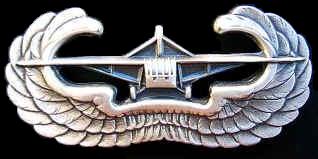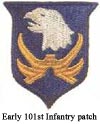
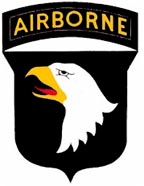
The badge of the division is a white eagle’s head with a golden beak on a black shield.
It takes its origin from the American Civil War. The black badge takes its origin from the "Iron Brigade".
A regiment of this brigade had for its mascot an eagle " Old Abe " or Old Abraham.
This mascot attended around thirty battles and was even hurt twice. This eagle was at the origin of the nickname of the men of the division “The Screaming Eagles”.
“You have a rendez-vous with destiny!”
It is with these words to conclude a General William C. Lee’s speech (1st commander of the 101st Airborne) that the legend of this division was born.
The 101st division was created during world war one (in November 1918) but never took part in any combats, it was dissolved until June 1921.
The 101st infantry division was reactivated as a reserve unit at Milwaukee, Michigan, the men who composed it were mainly conscripts for the federal service.
On the 15 of august 1942 the infantry division was dissolved only to reborn as an airborne division, the 101st airborne division.
The story of the 101st airborne division begins at the Clairborne camp, Louisiana under the command of General William C. Lee.
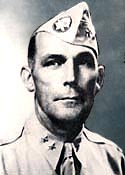 <-
General William C. Lee
<-
General William C. Lee
At the beginning only 3 infantry regiments composed the division, the 327th and 401st glider regiment and the 502nd parachute regiment (at that time this regiment was still at Fort Benning Georgia).
This mixture within the division between glider borne troops and paratroopers was sources of tensions mainly because paratroopers, considered as an elite unit, received among others a higher salary, had a different equipment and uniform.
As an elite troop the paratrooper had to differ at a glance from the simple soldiers.
In every gathering, the tensions between its components rose up again!
This situation lasted until 1944!
Officers and unit commanders doubled attention to keep peace in the ranks and in spite of these difficulties, the division continued to practice and to get organized by acquiring the qualified personnel for the various posts.
During the year 1942 two other regiments, the 501st and 506th PIR were planned to join the division.
In 1943, the division begins to make its first big local manoeuvres. Then, it left for Tennessee to make other more large scale manoeuvres.
Just before these manoeuvres the 506th PIR having finished its airborne formation joined the division.
During these manoeuvres the screaming eagles distinguished themselves pretty well demonstrating all the possibilities of the airborne troops.
Unfortunately the division lost its commanding officer, General Lee was badly hurt in a glider crash, this accident made him become aware of the dangerousness and the risks taken by the men of these regiments.
He even said at this occasion that the next time “he’ll have a parachute” which made, to a certain extent, pleased the men.
After these manoeuvres, the division got back to Fort Bragg continuing its training and making diverse airborne demonstrations for civil servants visiting the fort and so to advertise this “new weapon”.
At mid-august 1943 the 101st received the notification of its departure to England, the men reached Europe in September but the division was split up on the island.
Some men were sent to Wiltshire, other to Berkshire, the 501st PIR arrived in January 1944.
On the 5th of February 1944 the division lost its commanding officer, general Lee was sent back to the USA due to a heart attack, he will never go to combat with his men.
He was replaced by Brigadier General Maxwell D. Taylor an ex 82nd airborne artillery commander.
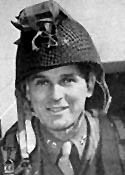 <- Brigadier General Maxwell D. Taylor
<- Brigadier General Maxwell D. Taylor
Some modifications occurred at the same time, the 401st GIR is dissolved its first battalion is sent to the 327th GIR as a third battalion and the second battalion is sent as reinforcement to the 82nd airborne.
Keeping training again and again the division took part in the three big scale manoeuvres organized in England, the operations BEAVER-TIGER-EAGLE
BEAVER took place at Slapton on Devonshire’s coast, the elements of the division jumped from trucks instead of airplanes and have to capture road bridges beyond the beach.
TIGER was nearly the same operation except that some German speed boats intercepted landing crafts near the coast and nearly 750 men were lost in the attack.
Nobody of the 101st was hurt.
EAGLE took part during the second week of may and was the big rehearsal before the Normandy invasion, the 101st was at least allowed to jump from planes and the objectives of the mission was again to capture bridges beyond the beaches.
This operation was considered a success even if a lot of men were dropped outside the drop zone.
After these manoeuvres the division got back to the Wiltshire and the Berkshire only waiting for D-day to come.
![]() D-DAY – June 44 – Normandy – France –
Operation Neptune :
D-DAY – June 44 – Normandy – France –
Operation Neptune :
Order of
battle -
Operation Normandy map -
Operation
101st
The biggest and long awaited military operation ever was about to begin in June, the invasion of Western Europe.
101st airborne (along with the 82nd airborne and English paratroopers) will be the spearhead of Operation Overlord.
At that time the 101st was an assault element of the VIIth corps.
Because of the inherent dangers of the mission, it was usually estimated that the loss rate should raise up to 80% of the engaged men. Late on the 5th of June General Dwight Eisenhower paid a visit to some units of the 101st, he wished them a good journey, good luck and didn’t leave the airbase until the last plane was in the air.
The control of 4 roads on the western side of Utah beach before the 4th infantry division landed was the main objective of the Screaming Eagles.
These roads, emerging from a flooded landscape (by Germans), were the only exits to leave the beach.
The other objective of the Screaming Eagles was to annihilate the secondary Germans defences and protect the western flank of the beach from a possible counterattack.
The men of the 101st had to capture some bridges near the landing beaches, control the Barquette lock near Carentan and destroy the bridge on the road to Carentan (on the North West).
Other elements had to take control on the river Douve on the North East of the city.
The main paratrooper wave was preceded by the dropping of pathfinders teams (or scouts) who had to mark the drop zones. There were 9 teams of pathfinders (3 for each drop zone) so there will always be a chance that at least one team should accomplish its mission.
The first man of the 101st to touch the ground about 15 minutes after midnight on the 6 of June was Captain Frank L.Lillyman from Skaneateless New York, he was the leader of a pathfinder team that landed near Ravenoville.
Pathfinder’s objectives:
501st PIR:
Teams had to mark the DZ D (drop zone) but many of them landed on enemy positions and had to fight before getting rid of their parachutes.
501st‘s paratrooper’s missions on DZ D was to protect the Southern flank of the invasion and march to Carentan.
502nd PIR:
Teams had to mark the DZ A near St Martin de Varreville near several German gun positions, they were parachuted less than two km from the zone.
For the 502nd and 377th PFAB paratroopers (2510 men) the mission was to control the neighbourhood of Turqueville and exits 3 and 4 of the beach.
506th PIR:
They had to mark the DZ C, for two of the teams it was the most precise drop of the pathfinder forces, unfortunately the third team was dropped over the sea.
At that time there was complete chaos on the landing and drop zones, most of the teams were lost or didn’t know if they were on the right DZ, for others they were involved in combats before having the time to accomplish their missions, other teams had big problems because their beacons were lost or damaged (by the drop itself or by combats).
The mission code for all flights was Albany, an amount of 432 planes were involved.
Nine C47 were needed to carry a company (in each plane the stick itself was composed of 16 or 17 men), there were 36 sticks for a battalion and 117 for a complete regiment.
There are also glider missions on support, the first mission was codenamed CHICAGO, it had for its objective the LZ (Landing zone) E near Hiesville and had to must deliver elements of the 327th Glider Infantry Regiment.
This mission was due to happen at 4am (3 hours after the parachute troops).
The second mission was codenamed KEOKUK (an Iowa city named after an Indian leader), gliders must land at dusk on the 6th June (9 pm) to avoid flak.
Just after 1 am as planes were approaching the French coast they encountered a strong mist and the first flak fires, this combined with inexperienced pilots and scattered planes lead to off-DZ drops, many of the men were dropped on wrong places and scattered under a large sector.
Only 2500 of the 6600 dropped men were together, for many of the other the first mission was to gather with other paratroopers,find out where they were, and carry out their objectives.
Just after midnight on the Aldermaston base pilots began to check the gliders with their check list as they did before every flight, they also controlled their loading manifest.
At 1.19am the first towing planes began to take off, the 52 gliders of the 434thTCG have a mission to carry 155 men of the 81st AAA and also men of the 327th GIR, the 101st signal company, 16 guns and 25 jeeps on the LZ E.
The flight path is the same as the paratrooper’s path, a few minutes after take off the first glider accidentally unhooked but landed without problems 6km away from the base, unfortunately this glider had onboard a powerful radio which was due to be used by General Taylor to contact England from the combat zone.
At 3.54am glider pilots received the green lights from their towing planes and unhooked above LZE, due to darkness, trees and other gliders they encounter losses and many passengers were killed, among them was Brigadier General Donald F Pratt.
His glider nicknamed “The fighting falcon” was heavier than other gliders because of some added protection, this combined with high speed landing and slippery grass lead to a crash into the LZ field’s tree line.
The Fighting Falcon was piloted by an experenced officer the Lt Col. Mike Murphy, he was followed by another glider piloted by Lt Victor Warringer which was carrying some elements of the medical team of the 101st, the 326th Medical PIR including Captain Charles O. Van Gorder.
Both gliders crashed in the tree line (250m from the D239 road), sitting on board a jeep General Pratt broke his neck broken, Lt Butler was also killed in the crash, Lt Col. Murphy had his right femur broken.
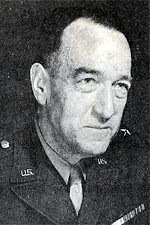
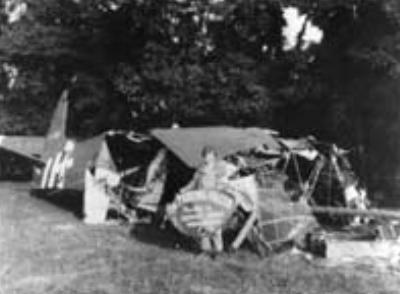 <-
The General Pratt
and
the rests of his glider
(more pictures)
<-
The General Pratt
and
the rests of his glider
(more pictures)
Like the paratroopers many gliders missed their landing zone, only 6 landed with precision, 15 at less than 1km, 10 landed far away in the west (near the road crossing “des forges” close to LZ W.
The last 18 landed on the East and South-East side of landing zone E.
Second mission’s glider (Keokuk) arrived at dusk, only 32 British made Horsa gliders had taken off from Aldermaston at 6.30pm, they carried men from the 327th GIR for their first daylight mission.
Approaching LZ E Horsas and towing planes were attacked by German fire coming from units in the neighbourhood of Vierville.
Most of the gliders landed on the LZE but there were 14 killed, 30 injured and 10 prisoners among pilots and glider men.
On DZ D the first battalion of the 501st PIR lead by Lt Col Ballard is progressing south of Angoville-au-Plain, Major Allen’s second battalion is moving forward to Basse-Addeville (west) while regiment’s commanding officer, Colonel Johnson, is on his way to find a path through the Douve River to Carentan at “La Barquette” lock.
But he will encounter a major opponent named the 6th Fallschirmjager-regiment (German paratroopers) lead by Major Von der Heydte, the famous Green devils.
From DZ C General Taylor has reached exit N°1 with the Ewell column, some other elements came from Vienville and Houdienville to exit N°2, 2 regiments 502nd PIR and 506th PIR have to clean the other beach exits.
In the North from DZ A the 502nd PIR has begin its mission, Lt Col Cassidy (1 battalion) along with Captain Lillyman (pathfinders) found out that St Martin de Varreville’s battery was completely destroyed by bombing.
They then headed north to establish roadblocks in the direction of Foucarville and so cover the Northern side of the airborne bridgehead from German counterattacks.
Colonel Cole (3rd battalion 502nd PIR) reached exit N°3 (La Vierville/Houdienville) after a brief combat and Captain Clemens reached exit N°4.
So at dawn all four beach exits are controlled by paratroopers, they are ready to gather with the beach troops.
At the end of the day paratroopers and men from the 4th Infantry division are reunited, the Barquette lock has been captured, only cross-roads on the Douve River are still in the hands of the Germans.
Some combats began at St Come du Mont, the main village in the zone and an important cross-road on the road from exit N°2.
The first field hospital was established at the Colombière castle near Hiesville around 8am on D-Day, the first HQ of the 101st airborne is established at the Lecaudey farm.
During the next days, the men of the 101st airborne advanced on the southern side of the zone but blocked by the fierce resistance of the Germans in the neighbourhood of St Come du Mont, they made very little progress.
The next morning the 506th had made some progress in the south.
The Germans were entrenched in Vierville and the town was only liberated after fierce combats, but now the road to St Come du Mont was opened.
The next town on the road, Angoville au Plain, was the first town where a big scale attack was made.
Von der Heydte’s first battalion was also deeply entrenched in the village, only a coordinated attack of the 2nd and 3rd battalion of the 501st PIR along with 401st GIR’s first battalion helped by a 81st AAA’s battery was successful.
That German paratrooper’s first battalion was finally cut in pieces by 501st and 506th paratroopers between Ste Marie du Mont and the Douve River.
At St Come du Mont 501st and 506th elements along with 401st GIR engage combats with the German forces, 501st’s third battalion went south of the village along Carentan’s road but it had to be helped by the 401st GIR’s first battalion but before reinforcements arrived the Germans were gone, they tried to chase the retreating Germans but in vain.
The town was now freed and the next step for the 101st airborne is Carentan.
Carentan is an obvious objective, this is a main cross-roads and its capture will lead to the junction between Utah and Omaha troops but at that moment the town is still in Germans hands, American soldiers are still cut into two separate troops (V and VII corps) at a crucial moment of the battle and General Eisenhower want to see them reunited.
On the evening of the 8th of June in the evening the 101st was able to carry on to the south, as General Taylor told General Collins (VIIth corps commander) that St Come du Mont and the Douve River are in their hands, this one replied “Alright, take Carentan now!”.
At that moment the 101st were in position in the north-west of St Come so on the 9th of June it held a straight line with the 502nd in the north (where it had made contacts with the 82nd airborne), the 506th on the road to Carentan with some troops ahead of them at the Douve River bridge, on the left the 327th GIR replaced Colonel Johnson’s 501st and captain Shettle’s 3rd battalion of the 506th at “La Barquette” lock and at “Les ponts du Port” (sea exit from Carentan’s harbour), 501st is on reserve at Vierville.
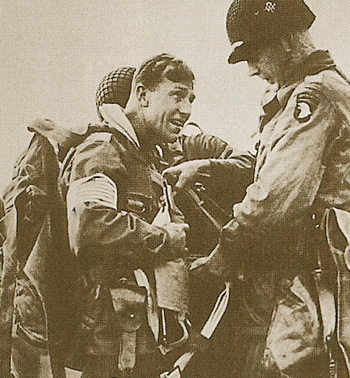 <- Colonel Johnson
<- Colonel Johnson
Utah beach exits are now controlled by the men of the 4th division, so the paratrooper battalions used that short break to gather isolated soldiers and to regroup soldiers who had fought with regiments or divisions they didn’t belong.
The part of the road leading to Carentan between canals, marshes and the Douve River will be called Purple Heart Lane as many soldiers where killed or injured there.
Because of the flooded marshes (by the Germans) the road is the only way to go to Carentan but because of this every man on the road is an easy target.
Colonel Joseph Harper’s 327th GIR pushed forward and crossed the Douve River at 1am on the 9th of June, engineers brought assault boats and the regiment, covered by artillery, crossed the river and took the small village of Brevands, therefore they established a supply route on the eastern part of Carentan.
On the northern part of the city the 326th AEB built a bridge for the men of the 502nd PIR but were spotted as they tried to infiltrate and had to retreat.
The 3rd battalion lead by Lt Col Cole followed by Lt Col. Cassidy’s 1st regiment succeeded to cross all 4 bridges on Purple Heart Lane, they then established a bridgehead on north.
The attack on Carentan was based on a double sided assault.
The first one on the right must cross the Carentan causeway on the north-west, then deviate from the city following the south-west and finally take “La Billonerie” also called Hill 30 which was supposed to be a retreat exit from the city.
The second assault must be launched on the city itself meanwhile a small troop has to head east to join with the Vth corps.
502nd’s 3rd battalion launched its attack on the right flank, it is soon slowed down by a fierce German defence, the battalion managed to cross the fourth bridge at “la Madeleine” but stayed pinned down by machine gun units entrenched in a farmhouse.
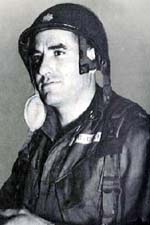 <-Lieutenant
Colonel Robert G. Cole
<-Lieutenant
Colonel Robert G. Cole
Lt Col Cole had asked for artillery fire but that changed nothing, he was facing 2 solutions, retreat or try to unlock the situation.
A paratrooper never retreat so after some losses he grabbed a Garand rifle off a dead man and screamed “Fix up bayonets, let’s get out of this marsh”.
Covered by smoke artillery fire they launched the assault, due to the confusion of the combat and seperate small groups only about 50 soldiers (they were nearly 250 soldiers there) followed him along with another assault led by Major Stropfka.
When they finally reached the farmhouse,the Germans were gone and the situation was clear and they decided to establish their HQ there.
For this action, the first bayonet assault of the airborne troops ever, Lt Col Cole was awarded the Medal of Honour of Congress but because he was killed by a sniper in Holland he never received it.
Having encountered heavy losses along the causeway, during the machine gun fire and during the assault, the battalion was too weak to pursue the Germans.
501st PIR’s first battalion went up to the first lines but had encountered losses along the causeway, they dug in waiting for reinforcements from the second battalion.
Finally on the 12th of June, elements from the 506th PIR arrived to reinforce the 501st PIR, together they took Hill 30.
502nd PIR was fighting along the causeway while the 327th GIR and a 401st GIR battalion attacked on the left flank.
401st A company progresses near south-east to Auville sur le Vey, to make contact with the V corps, encountering a strong German resisance they just crossed the lines and met with some elements of the 29th Infantry division.
Having crossed the Vire River 327th GIR now had as an objective the railway bridge and another bridge above the Vire-Taute canal, this will block all eastern withdrawal from Carentan, they succeeded taking the bridge but not the railway bridge which was blown up during the battle, they can now progress to the city.
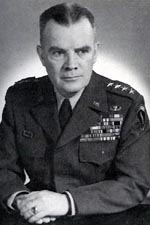 <-Brigadier general Anthony C. McAuliffe
<-Brigadier general Anthony C. McAuliffe
On the 12th Brigadier General Anthony C. McAuliffe, 101st artillery commander, coordinate the final assault on Carentan, during the night his guns had heavily hit the city forcing the Germans to retreat.
506th 2nd battalion entered the city in the south-west and met with 401st first battalion entering by the north-east, together they chased the last Germans who were in the city.
501st PIR, 506th PIR and 327th GIR were ordered to dig themselves in case of a German counterattack, both PIR went along the south-west roads while 327th GIR went east.
On the 13th the Germans launched a fierce counterattack which was broken down by the help of the 2nd armoured division sent there by 1 US army’s HQ.
The city will now stay for good in Allied hands.
Two days later the VIIth corps is finally completely operative.
101st airborne got new orders, they had to establish a defensive perimeter across the Cotentin’s peninsula and protect the left flank of the VIIth corp.
Two days later they were sent to Cherbourg in order to help the 4th infantry division.
Then the division stayed in France as a reserve unit until mid-July when they were sent back to England for rest and recuperation , they then closed the first act of their destiny.
During the Normandy campaign the screaming eagles encountered heavy losses, 2043 of the men were dead, 7980 were injured, 350 were prisoners.
They spent the end of the summer in England, they replaced their equipment, received new reinforcements and continued training while waiting for their next mission.
In USA 17th, 82nd and 101st airborne were mixed together in the new created XVIII airborne corps lead by General Matthew Ridgeway.
In August 1944 General Eisenhower created the First airborne army composed by English, US and Polish paratroops, they will soon have to be tested during Operation Market Garden.
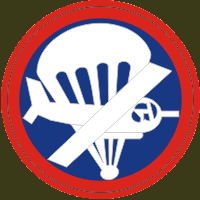 Holland –
September 1944 – operation Market-Garden
Holland –
September 1944 – operation Market-Garden
Order of Battle -
Operation Holland map
What will have to be the next mission for the men of the 101st airborne?
Every man asked this question and twice an airborne assault on France was cancelled because of the fast progress of the armies on the continent.
The third planned mission was the big one, this was called Operation Market Garden and will take place in Holland.
This operation was the idea of British Field Marshal Montgomery and was designed as a double headed assault, an airborne assault : Market and a ground assault : Garden.
The paratrooper’s mission was to take control of a line coming from the north from Eindhoven and Arhnem to the Ijselmeer (Zuider zee) (South Sea) so that English XXX corps could progress into Holland, cross the Rhine River, open a breech into German lines to finally attack Germany’s fortifications of the Siegfried line from behind.
The dutch countryside is filled with rivers, canals, drain ditches and dams, so as in Normandy the control of the bridges will be the first task of the paratroopers.
They had to capture and control the bridges before their destruction and avoid any German attacks on the main roads.
The allied First airborne army (82nd and 101st US airborne, 1st British airborne, 1st Polish Brigade, 52nd glider borne) was planned to be dropped on the 17th of September 1944, Lt General Lewis H.Brereton decided that it would be a daylight invasion.
Because of the lack of planes not all airborne troops will be launched on the same day.
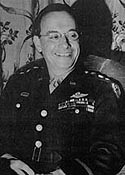 <-
Lieutenant General Lewis H. Brereton
<-
Lieutenant General Lewis H. Brereton
101st airborne objective is to hold the far southern flank of the British airborne troops and control a 24km zone between Eindhoven and Veghel including all bridges in the neighbourhood.
General Taylor decided that paratroopers had to jump on the 17th of September, will be reinforced by the 327th GIR at D-day + 1 and by artillery on D-day + 2.
During the approach of the zone, planes had to endure strong anti-aircraft resistance but this time pilots stayed in formation and most of the paratroopers landed on their DZ (West of the main road and in the middle of the division’s sector near the villages of Son, St-Oedenrode and Best).
The 501st was dropped near Veghel, north of the 502nd, under Colonel Howard R. Johnson (who was later killed) they took Veghel in two hours along with the bridges over the Willems Vaart canal and the Aa river.
502nd PIR under order of Colonel John H.Michaelis was dropped north of the 506th PIR, its objective was to hold and secure a future LZ for the gliders, they also had to take the village of St Oedenrode with its bridge over the Dommel River.
H Company was sent south to take control of the bridges over Wilhemina canal, they succeeded easily but were soon pushed back by a German counterattack.
502nd PIR fought during 3 days at St Oedenrode, the bridge was only taken on the third day at 6 pm with the help of British tanks. Germans lost 15 88mm guns, 300 men killed and 1056 prisoners.
506th PIR dropped near Son had to take the bridge over the Wilhemina canal south of the village and after its capture move to Eindhoven.
2nd and 3rd battalion took the village but the bridge was blow up by the Germans before 1st battalion could take it. Some men swam across the canal and attacked Germans on the opposite bank, they then built a foot-bridge for the rest of the regiment, next days they entered Eindhoven and chased the remaining Germans.
The first big Dutch city was freed on the 18 of September at 6 pm, jammed by an enthusiastic crowd the streets of the city looked like a carnival for British armoured forces passing through it.
British engineers built a new bridge over the canal so that ground forces may keep progressing to the north.
With the exeption of the southern bridges every objective of the 101st airborne was fulfilled on D-day.
The next step was to hold these objectives against possible German counterattacks to keep an open road for the ground troops.
General Taylor received information that the Germans planned a major offensive from the east of the road near Veghel and Uden.
Elements of the 506th PIR arrived on the 22nd September at Uden to defend the village, but the main assault on the 23rd of September was against Veghel.
Aware that General Taylor had sent the 327th GIR to reinforce 2nd battalion of the 501st PIR.
Luckily General Mc Auliffe was at Veghel and received orders from Taylor to take command of the village and the responsibility of its defence.
Men of the 501st made a reverse attack on the first German wave which was coming from the eastern village of Erp.
But second German wave cut the road between Veghel and St Oedenrode, as panzers were approaching Veghel, Mc Auliffe decided to use anti-tank weapons, helped by British armoured forces the Screaming Eagles pushed back the enemy.
The afternoon was a succession of attacks on the village but the paratroopers hold the place strong.
After the battle their new objectives were to take the road again.
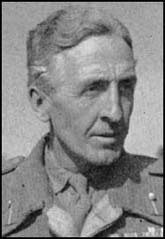 <-Lieutenant General Brian Horrocks
<-Lieutenant General Brian Horrocks
On the 23rd of September, Lt General Brian Horrocks, commander of the British corps sent the 32nd to the south to open the road meanwhile General Mc Auliffe sent two 506th PIR brigades to the north.
When US paratroopers arrived at the zone they discovered that the Germans were gone so they headed north-east to Uden, when they encountered the first British tanks, the road also called Hell’s highway was opened again.
During the following days the road was cut again by Germans at Koeverling between Veghel and St Oedenrode but Germans attacks on Veghel stayed sterile.
On the 25th of September, elements from 506th PIR (from Uden), 502nd PIR first battalion and units from the 50th British division (from the northern town of St Oedenrode) counterattacked, the Germans retreated during the night.
During the following days British engineers had to clear the road of mines while 101st airborne positions were attacked over and over but they managed to keep the road open.
At the beginning of October VIII and XII British corps relieved the 101st , they were sent to a sector known as “The Island”.
This was a thin ground sector between the Nederrijn (Low Rhine River) and infield Waal’s rivers with Arhnem on the north and Nijmegen on the south, attacked from alls sides the division lost a lot of men there but within 24 hours so-called “poorly fed and equipped paratroopers” annihilated the 957th German regiment and that was the end of the 383rd Volksgrenadiere regiment which was supposed to be in a quiet sector on the island.
Encountering a strong German shelling and being in the middle of a German attack at Opheusden they went back to the eastern line.
The city moved from one side to another all day long before finally taken for good by the Screaming Eagles, occurring heavy losses to the Germans.
101st activity during the following days only consisted on patrols, one of them lead by Captain Hugo S. Sims 501st PIR crosses the Rhine River on inflatable boats, reached an observation point on the Arhnem-Utrecht road 13km behind enemy lines, they gave inquiries by radio on enemy movements, took some prisoners who gave them more inquiries and they get back to their lines.
After that the 82nd airborne joined the Screaming Eagles to defend the sector.
During November they were sent back to Mourmelon France for rest and were also supplied with new men and equipment.
Operation Market Garden was a complete failure for soldiers they have lost a lot of men, on a strategic point it was a semi-failure because a lot of German resources had been destroyed.
They keep on training for a future airborne operation over Germany but on the 16th of December all plans were ruined by a major German counterattack in Belgium.
 Belgium –
December 1944 – operation Battle of the Bulge
Belgium –
December 1944 – operation Battle of the Bulge
Operation Ardennes map -
On the 16th of December 1944 German forces launched their last major offensive, Hitler’s plan was to realize the same breakthrough than in 1940 through the Ardennes, reach Meuse River and cut allied forces in two distinct parts.
In case of a major success further plans were to take the Antwerp harbour again.
The offensive was called “Wacht Am Rhein” (Rhine River guard).
American forces were totally surprised by the attack so Germans could easily pass through allied lines.
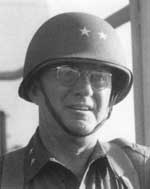 <-Général
Troy Middleton
<-Général
Troy Middleton
General Troy Middleton, VIII corps commander, whose HQ was at Bastogne needed reinforcements as quickly as possible.
Bastogne was a strategic city because all major roads of the region cross there, if the town had to be in German hands this would have allowed their armoured forces to easily advance to the West.
Bastogne had to stay in allied hands but the VIII corps was weak because of its previous losses so Middleton knew that he wouldn’t keep the city forever.
He asked more reinforcements to General Courtney Hodges commander of the 1st US army, Hodges relayed the demand to the SHAEF( Supreme Headquarter of the Allied Expeditionary Forces-Supreme allied HQ).
The only reserve units of the SHAEF were the 82nd and 101st airborne so General Eisenhower sent them directly under the orders of the 1st US army.
General Taylor, who was back to the USA at that time for affairs with the war department, gave a temporary division‘s command to Brigadier General Mc Auliffe.
Early on the 18th of December men were woken and had to equip themselves with all they could get, the rest was over they were now ready to fight again.
Men of the 101st division were sent to Bastogne by trucks in extremely difficult conditions, barely anyone had winter equipment and trucks were not covered.
They finally arrived in the neighbourhood of Bastogne around 9pm, Mc Auliffe got only one order from Middleton, who was retreating with his HQ, “HOLD THE CITY”.
As they were coming into town they came across a lot of retreating soldiers who told them that Germans were coming down the road, the men replied “We all know that, we are here to welcome them”.
Along with the Screaming Eagles was the 10th armoured division, remains of the nearly dry-blooded 9th armoured division, the 705th Tank destroyer battalion, the 755th campaign artillery battalion, the 158th Engineers, the 420th armoured artillery and some late comers from diverse units that fled the combat zone.
501st PIR was sent east on the 19th to make contact with the troops defending the city but they were stopped by German resistance near the village of Neffe.
On the 20th of December the town was nearly completely surrounded because of an eastern German attack, Mc Auliffe decided to pull back his troops to strengthen the eastern and northern flanks.
502nd PIR was sent to the north at Recogne near Longchamp with support from 9th armoured CC R and 10th armoured CC B.
506th PIR was sent between the village of Foy and the railway from Bourcy to Bastogne.
501st PIR was sent to the right of the 506th facing the east and with its southern flank near Neffe.
327th GIR 2second battalion was sent to the village of Marvie.
During these first confused hours the medical company and surgeon teams were captured west of Bastogne, this was the first essential loss for the 101st.
They tried, in vain, to break the 501st line by multiple attacks, but the attacks of the 327th GIR lines were a bit successful, some defences were broken but men gathered again and made a successful counter-attack.
On the 21st of December the town was now completely surrounded by Panzer divisions, infantry and paratrooper divisions, on that day the Corps general asked for a report on the disquieting situation, the answer he had from Lt Colonel H.W.O. Kinnard G-3 was “Do you see what a donut looks like? We are the hole”.
On the 22nd of December 4 German plenipotentiaries arrived in the 327th GIR lines with a white flag, they were carried to General Mc Auliffe HQ.
They gave him an ultimatum: “Surrender within 2 hours or the whole city will be destroyed by massive plane bombing and artillery shelling”.
Mc Auliffe only and famous answer was “NUTS”, the German officer who didn’t understand the sense of the answer asked what does it mean: “It means go to hell!!”
That answer gave a boost to the weak American’s morale.
On the 23rd of December the sky was clear at least, this allowed USAAF to supply the surrounded forces, munitions, food, medical equipments and a 101st pathfinder team were dropped over the city, other planes bombed the German lines.
This was bad news for the Germans because with such supplies the town wouldn’t be ready to be taken soon.
On that day Germans attacked the defence perimeter in the 327th GIR lines and on Christmas day a German force broke the line in the Hemroulle sector, aware of that they sent all their forces to that village.
The 10th armoured division and the 705th tank destroyer held the town and on its side the 502nd PIR attacked in the neighbourhood of Champs, Germans were then stuck into an US claw and were annihilated.
On Christmas Eve General Mc Auliffe sent a message to all soldiers to thank them for what they did and wish them a merry Christmas.
Early in the morning of the 25th of December Germans attacked again in the 502nd and 327th sectors but were pushed back and destroyed.
The town and US HQ were then bombed during Christmas night.
On the 26th Germans launched another attack which was pushed back again with artillery support.
In the afternoon growling sounds could be heard but this time there were tanks from the 4th armoured division, at 5.15pm Germans lines were attacked by the tanks and the town was finally freed.
All casualties could be evacuated but the division had to keep contacts with the retreating enemy.
As the city was open General Taylor come back to take control of his own division, he was told by General Mc Auliffe that the 101st was ready for combat.
First, the defence of Bastogne considerably slowed down German breakthrough, then they spoiled a lot of useful resources to take the city, resources that could be used elsewhere for their offensive.
The division received a lot of congratulation messages like: “All the components of the 1st Canadian Army looked with admiration the wonderful way their comrades from the 101st airborne fought at Bastogne against the German army. You have all our respect and congratulations.”
The Screaming Eagles stayed in the Bastogne sector during the following weeks to fight against enemy resistance pockets and clean the zone.
On the 9th of January 1945 they launched the first offensive after all these weeks of defence, they took back Noville and Bourcy, took part to the advance to Houffalize and then the liquidation of the German’s salient.
On the 18th of January a ceremony was held at Bastogne, 5 men received the Silver Star medal and General Taylor received the flag of Bastogne from the hands of the town’s major.
On that same day they were sent to Alsace as a defence line element until the end February, right after that they were sent back at least to Mourmelon.
On the first of March the 101st airborne received a new organisation structure, the 506th PIR became an organic element of the division, even though it fought with the 101st and wore the distinctive insignias it was only an attached unit to the division.
Two weeks later, on the 15th of March, General Eisenhower paid a visit to the Mourmelon camp and granted the division with the Distinguished Unit Citation (the ancestor of the Distinguished Presidential Citation) for its action at Bastogne, this was the first American unit to be awarded with that Citation.
The 101st airborne kept on training in case of a hypothetic jump over Berlin but they were sent in the beginning of April (except the 501st PIR) to positions near the Rhine River
In the last days of the war some elements of the 101st were at Berchtesgaden near Hitler’s eagle nest.
They chased all the Nazis they could find.
On the first of August they were relieved by the 42nd division and were sent back to France in order to prepare them selves for an airborne assault over Japan.
This would never happen because Japan surrendered on the 2nd of September 1945 and the division was disabled on the 30th of November 1945 in France.

